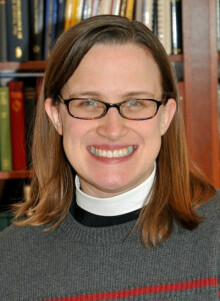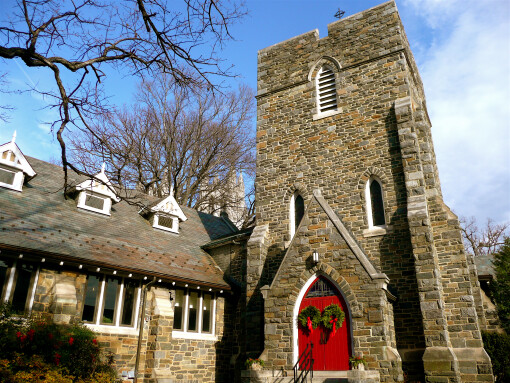What Kind of Sign Is This?

Series: Epiphany
Speaker: The Rev'd Emily Griffin
Tags: christian, episcopal, sermon
Sermon – What Kind of Sign Is This?
The Rev. Emily Griffin – 1/17/16
Isaiah 62:1-5, I Corinthians 12:1-11, John 2:1-11
Is this really what we need today? There are days when our Gospel reading seems spot on, and other days when the thread connecting then and now is a lot harder to see. And frankly, today I’m not sure how many of us are up for a wedding feast. Today some of us feel a little like Jesus in response to his mother’s comment about the wine running out: “What concern is that to you and to me?” In my mind, that’s not a rude question. It’s an honest one. Surely, there are more pressing matters at hand. After all, we’re talking about the One whose mission was to bring good news to the poor, to let the oppressed go free. Especially on Martin Luther King weekend, isn’t this serious Jesus the One we need? If we have to hear about Jesus the miracle worker today, can’t we hear about him relieving the affliction of someone who is desperately ill? Can’t we hear something that will help us shift the focus off ourselves onto people who truly need our help? Who really cares about him changing water into wine at a wedding?
Well, I’m guessing it meant something to the family hosting the wedding. Perhaps we can start there. Weddings, both then and now, are a time when we try on our best selves, when we hope that the pictures won’t reflect the fault lines trembling just beneath the surface. We understandably want everything to be beautiful, every guest to walk away feeling full, if not a little impressed with what we’ve been able to create. It doesn’t sound so different from church, does it? And particularly in the ancient Near East, the ability to host a wedding feast was a matter of honor and pride. Honor meant as much to them then as success means to us now. So running out of wine wasn’t just a social faux pas; it was a cause for shame. There are some who say that Jesus’ action here was an attempt to remove shame, that he was serving a serious and dignified purpose after all – and therefore, it’s OK to like this story, no matter how small or trivial it may seem in the face of say, world hunger or structural injustice.
I do think that was part of it. But he could have done it in a more reasonable and measured way, couldn’t he? I mean - he doesn’t just fill in with a few cases of Yellowtail or Barefoot Merlot. He provides more wine than these folks will ever be able to consume on their own, and it’s a better quality than anything they could have imagined. We’re told by John, our Gospel writer, that this rather strange moment was the first of Jesus’ signs for those with eyes to see and ears to hear, that it was a revelation not just of power, but of glory.
So where is the glory here - for us who are seeking a sign now of the ongoing presence and loving-kindness of God? There are plenty of instances in the Gospels when Jesus demonstrates power over nature; we don’t need this story for that. Likewise, there are countless times when he uses his power to serve justice. That’s not what this is about either. We might not understand how he feeds 5000 people all at once, but at least we can tell ourselves that he’s feeding the hungry. But here in this moment – turning useful water into world-class wine – fundamentally, it’s not about meeting basic needs or fulfilling some kind of moral obligation. What happens here is more fun, more joyous, more about the party than that; here the point honestly seems to be joy, the continuation of the wedding feast even when we’re not sure that should be our concern, not just consuming the gifts God offers us but savoring them for once. Could it be that God truly cares about our enjoyment, our delight in the good things of this world? Or even more astounding, that God might actually take delight in us?
The prophet Isaiah in today’s first reading claims exactly that. And it was as hard for his original audience, some 600 years before Jesus, to swallow as it is for us today. They, like us, knew what they’d done and left undone. And in their case anyway, the shame was visible. After boasting that they’d always be safe because God was on their side, they were humiliated by the Babylonians and sent away from their homeland for decades. As the years passed and nostalgia set in, they’d forgotten just what had been done to their temple. They kept hope alive by remembering the Jerusalem that was, with its glorious worship space and seemingly impenetrable walls. Yet the city they eventually returned to looked nothing like the land of their dreams. The walls were still black with soot from fires set during the siege. Rebuilding would be hard, painful work. They didn’t know where to start, and they weren’t sure they felt like trying.
Imagine how today’s words from Isaiah sounded to them. After all that shame and disgrace, of fearing that God had finally given up on them, this is what they’re told: “You shall be a crown of beauty in the hand of the LORD…You shall no more be termed Forsaken, and your land shall no more be termed Desolate. You shall be called My Delight is in Her, and your land Married; for the LORD delights in you.”
“The LORD delights in you.” Delight isn’t something we normally associate with God. Love and faithfulness, yes (we hope), anger and grief, sometimes, but delight? It seems – well, too optimistic, perhaps even too naïve for God. We tend to think of God in more reasonable, measured terms – decidedly not like a bridegroom hopelessly in love with his bride, willing to risk foolishness and even heartbreak for the privilege of having her by his side, come what may. Too many of us know the fallibility of such human love. Yet that’s the image Isaiah gives us today. Honestly, that might be harder for us to picture than Jesus turning water into wine.
What are we meant to do with such images – with a God who insists on offering us wine when we’re not sure we deserve water, who persists in loving us and finding cause for delight in us precisely when we feel the most vulnerable and exposed and unlovely? We could dismiss such notions as romantic nonsense, I suppose, and get right back to the business of serving others, whoever “they” might be, but I’m not sure that gives God enough credit. We might at least consider the gift, not to mention the Giver, before we decide we’re not worthy.
Or perhaps that’s not our problem. Perhaps we’d prefer to be on the giving end of things; maybe we’re not comfortable admitting that there is no real line between those who need and those who don’t. We like focusing on others sometimes because it keeps the focus off our own fault lines. Sometimes the last thing we want to do – as individuals or as a community - is look in the mirror; we’re afraid of what we might see if we slowed down long enough to consider how God might actually see us. Even if God is hopelessly in love with us now, what happens when our true selves are revealed?
I’ve spent a long time this week struggling with this imagery. As someone whose parents have been married three times apiece, I know all too well the imperfection of the metaphor. Still, it was a lot easier preaching these passages before I got married. Now that my own wedding is several years behind me, I see things in my husband now that I couldn’t have seen back then – and wouldn’t have wanted to see. More to the point, I see things in myself now – pettiness, coldness of heart sometimes - that I never would have admitted then, even if I knew they were there. There’s too much history now to pretend that it was all as lovely as we tried to make it look on our wedding day. How can this precious, fragile, earthbound love possibly reflect God’s love or God’s delight in us?
Well, I suppose it depends in part on how we define beauty and how we experience joy. If beauty admits no brokenness or change over time, then it is an unreachable standard and a hopeless fantasy. And if joy depends on its constantly being felt, then perhaps it is illusory. But if the beauty God sees in us allows for the possibility for things to be built and rebuilt, melted down and refashioned into a more textured, more complex whole, that holds the past gently alongside the present, then it’s not such a stretch that God might still find us beautiful. And if joy is allowed to be greater than the measure of our feelings in any given moment, then perhaps it’s still within our grasp.
Perhaps there’s more to this wedding imagery than we originally thought. If nothing else, it points to the fact that our story as the people of God is not over yet, and that the truth of God’s love for us is not dependent on what we can see on the horizon at this moment. It points us to a future we can’t see yet and tells us that while transformation is not inevitable, it is possible – if not in our time and strength, then certainly in God’s. Come to think of it – that kind of vision – of a God committed to loving us and seeing beauty in us even when we can’t see it, who seeks not just our survival but our joy – it’s not so different from the vision needed to work for justice. Joy and justice – it’s not an either/or. We can have both. But here’s the trick. Both require us to receive as well as give and admit that whatever transformation needs to take place – it’s not just for “them,” whoever they might be. It’s for us too.
In the meantime, if you’re still looking for a sign, if you’re willing to accept a miracle, then join us here at this table. Let the bread and wine, broken and beautiful, be your sign today, a tangible sign of the ongoing presence of a God who will never leave or forsake us. Welcome to the feast. It may be precisely what we need. Amen.
 Welcome to St. Alban’s Church! Every Sunday, and most days in between, people gather in this place to worship, to learn, to grow, to share the joys and struggles of our lives, and to seek God’s grace in the midst of our lives. We do not come because we have it all figured out, but because we are seeking light on the way. We come as we are and welcome one another.
Welcome to St. Alban’s Church! Every Sunday, and most days in between, people gather in this place to worship, to learn, to grow, to share the joys and struggles of our lives, and to seek God’s grace in the midst of our lives. We do not come because we have it all figured out, but because we are seeking light on the way. We come as we are and welcome one another.

